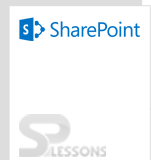SharePoint master pages provide the interface and overall layout of the pages on a SharePoint site.The master page displays the persistent elements that you expect to see when you navigate from page to page on a site. These elements can include a company logo, title, navigation menu, search box, and the colors or graphics associated with the business or organization.
A master page serves as a container for all of the parts of a content page, and it also contains the necessary code to render the SharePoint interface. You change the user interface or the brand of a SharePoint site by customizing the master page. You can customize the out-of-the-box master page or create a new master page using design manager.
In SharePoint 2013 there are 2 default master pages, rather than only the 1 that was available in SharePoint 2010. The default master pages in SharePoint 2013 are named
- oslo. master
- seattle. master.





